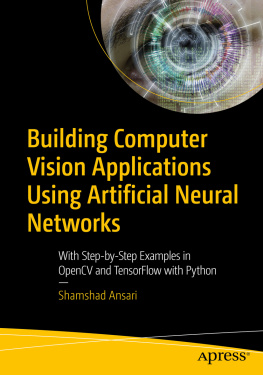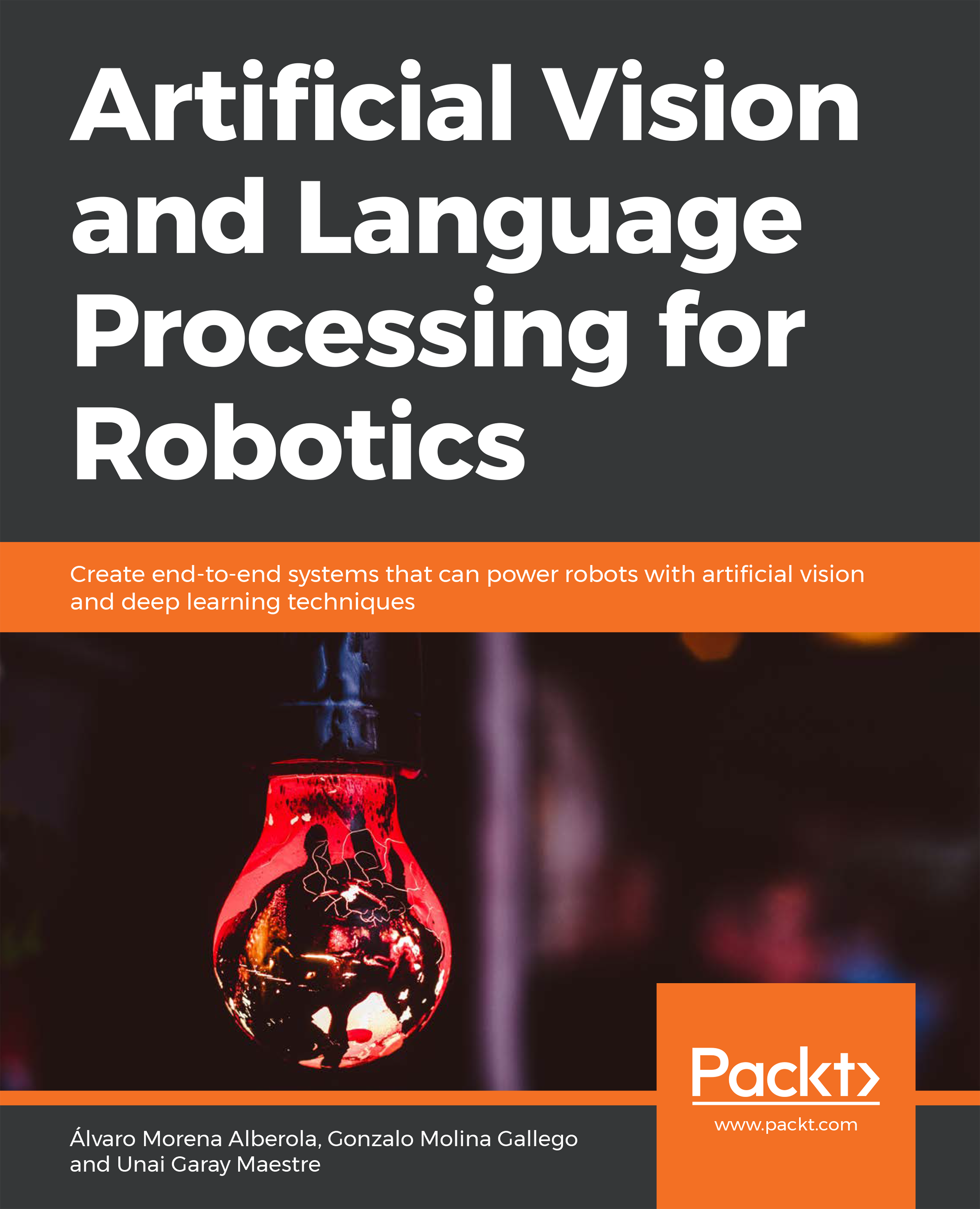Alvaro Morena Alberola - Artificial Vision and Language Processing for Robotics: Create end-to-end systems that can power robots with artificial vision and deep learning techniques
Here you can read online Alvaro Morena Alberola - Artificial Vision and Language Processing for Robotics: Create end-to-end systems that can power robots with artificial vision and deep learning techniques full text of the book (entire story) in english for free. Download pdf and epub, get meaning, cover and reviews about this ebook. year: 2019, publisher: Packt Publishing, genre: Computer. Description of the work, (preface) as well as reviews are available. Best literature library LitArk.com created for fans of good reading and offers a wide selection of genres:
Romance novel
Science fiction
Adventure
Detective
Science
History
Home and family
Prose
Art
Politics
Computer
Non-fiction
Religion
Business
Children
Humor
Choose a favorite category and find really read worthwhile books. Enjoy immersion in the world of imagination, feel the emotions of the characters or learn something new for yourself, make an fascinating discovery.

- Book:Artificial Vision and Language Processing for Robotics: Create end-to-end systems that can power robots with artificial vision and deep learning techniques
- Author:
- Publisher:Packt Publishing
- Genre:
- Year:2019
- Rating:5 / 5
- Favourites:Add to favourites
- Your mark:
Artificial Vision and Language Processing for Robotics: Create end-to-end systems that can power robots with artificial vision and deep learning techniques: summary, description and annotation
We offer to read an annotation, description, summary or preface (depends on what the author of the book "Artificial Vision and Language Processing for Robotics: Create end-to-end systems that can power robots with artificial vision and deep learning techniques" wrote himself). If you haven't found the necessary information about the book — write in the comments, we will try to find it.
Create end-to-end systems that can power robots with artificial vision and deep learning techniques
Key Features- Study ROS, the main development framework for robotics, in detail
- Learn all about convolutional neural networks, recurrent neural networks, and robotics
- Create a chatbot to interact with the robot
Artificial Vision and Language Processing for Robotics begins by discussing the theory behind robots. Youll compare different methods used to work with robots and explore computer vision, its algorithms, and limits. Youll then learn how to control the robot with natural language processing commands. Youll study Word2Vec and GloVe embedding techniques, non-numeric data, recurrent neural network (RNNs), and their advanced models. Youll create a simple Word2Vec model with Keras, as well as build a convolutional neural network (CNN) and improve it with data augmentation and transfer learning. Youll study the ROS and build a conversational agent to manage your robot. Youll also integrate your agent with the ROS and convert an image to text and text to speech. Youll learn to build an object recognition system using a video.
By the end of this book, youll have the skills you need to build a functional application that can integrate with a ROS to extract useful information about your environment.
What you will learn- Explore the ROS and build a basic robotic system
- Understand the architecture of neural networks
- Identify conversation intents with NLP techniques
- Learn and use the embedding with Word2Vec and GloVe
- Build a basic CNN and improve it using generative models
- Use deep learning to implement artificial intelligence(AI)and object recognition
- Develop a simple object recognition system using CNNs
- Integrate AI with ROS to enable your robot to recognize objects
Artificial Vision and Language Processing for Robotics is for robotics engineers who want to learn how to integrate computer vision and deep learning techniques to create complete robotic systems. It will prove beneficial to you if you have working knowledge of Python and a background in deep learning. Knowledge of the ROS is a plus.
Table of Contents- Fundamentals of Robotics
- Introduction to Computer Vision
- Fundamentals of Natural Language Processing
- Neural Networks with NLP
- Convolutional Neural Networks
- Robot Operating System
- Build a Conventional Agent to Manage the Robot
- Object Recognition to Guide a Robot Using CNNs
- Computer Vision for Robotics
Alvaro Morena Alberola: author's other books
Who wrote Artificial Vision and Language Processing for Robotics: Create end-to-end systems that can power robots with artificial vision and deep learning techniques? Find out the surname, the name of the author of the book and a list of all author's works by series.



